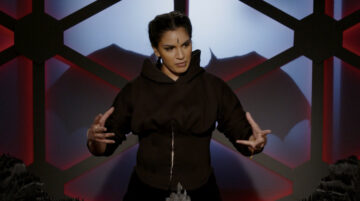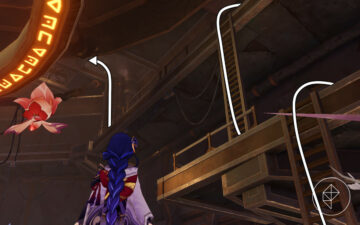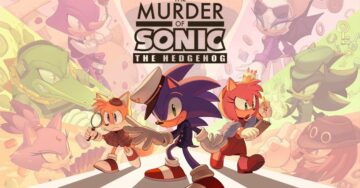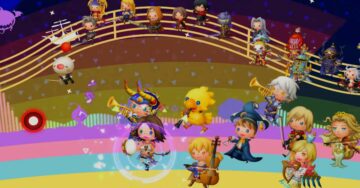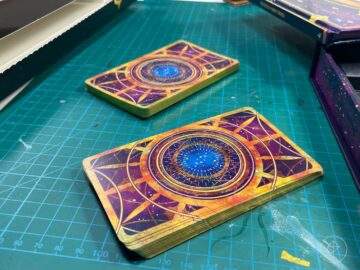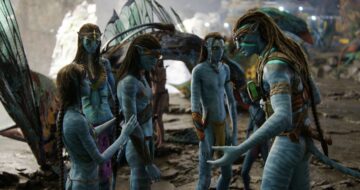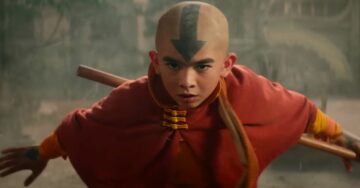So, you started Shadow and Bone and they keep saying “Grisha.”
While author Leigh Bardugo’s fantasy saga is full of worldbuilding terminology and political backstories, one big question sticks out after episode 1 of Netflix’s TV adaptation: What the heck is a Grisha?
For those unfamiliar with Bardugo’s books (which come with a nice little breakdown before the first chapter — or at least my copy does) and the lore within, here is why the Grisha matter in the grander context of the story, the difference between a Squaller and a Tailor, and every other question you were afraid to ask.
The first episode of Shadow and Bone contains approximately 8 million uses of the word “Grisha,” but uh, what is a Grisha?
The Grisha are the magic users of this world — except they don’t call it magic. The magic that the Grisha wield is referred to as “small science” since it is based on manipulating matter in its basic form and must adhere to physical laws. Grisha cannot create from nothing (usually).

Are the Grisha like the benders in Avatar? Are there different types? I saw one shoot a fireball.
Grisha fall into three main orders: the Corporalki, which deal with the living and the dead; the Etheralki, which deal with natural elements (… basically the benders of the earth, to use Avatar: The Last Airbender lingo); and the Materialki, which involve manipulating materials like glass, metal, textiles, and chemicals. Thankfully, at least in the Ravkan army, they’re all color-coded!
Within those categories, there are even more specificities.
Corporalki are divided into Heartrenders, Healers, and Tailors. Heartrenders break the body; Healers fix it. Tailors are a weird combination of Corporalki and Materialki and are able to manipulate their physical appearance and others’. They’re pretty rare and there is only one Tailor in the entire run of books. They wear red.
Etheralki are divided into Squallers (manipulating air and storms), Inferni (summon combustible gases to create fire), and Tidemakers (utilizing temperature and pressure to summon and control water). They’re also called Summoners as a blanket term and wear blue.
Materialki are also called Fabrikantors. They’re becoming a little outdated since technology is quickly catching up to small science. Materialki are divided into Durasts, who deal with solid matter (steel, textiles, etc), and Alkemi, who deal with liquids and powders (and make things go boom). They wear purple.

At the end of episode 1 Alina shoots light out of her hands and everyone calls her the Sun Summoner, so are you telling me there’s another type of Grisha you didn’t mention??
The fabled Sun Summoner is an Etheralki who has the power to summon heat and light from the sun. There has not been a recorded Sun Summoner before Alina manifested her powers, though there have been legends about someone with the power.
How about Ben Barnes? What kind of Grisha is General Kirigan? He has light powers-ish.
While Alina summons sun and light, Kirigan is a Shadow Summoner, which means he can manipulate darkness. He is also an Etheralki, and also the only known living one of his kind.
A Shadow Summoner created the Shadow Fold, the swath of tangible darkness that divides Ravka in half, and no one has been able to get rid of it. Since Summoners are all about manipulating existing matter, Kirigan can, like, move shadows but he cannot banish them. This is why all of Ravka has hope for the Sun Summoner who may be able to blast away darkness with the light.

Do people like the Grisha? There seem to be some mixed feelings about the Grisha.
With the exception of Ravka and Novyi Zem, most of the world isn’t too keen on the Grisha. In Fjerda, Grisha are persecuted and tried as witches. In Shu Han, they are experimented on. In the Wandering Isle, their blood is used as a healing solution. In Kerch, they’re usually indentured servants.
Grisha in Ravka must serve the Second Army and are taken away from their families once they start displaying powers. They get to live in a fancy palace, though they’re basically forced to serve the king. The First Army, i.e. the regular people army, is kinda jealous of the Grisha, and as technology has advanced and guns can do the work of magic, the non-magic people think Grisha are old-fashioned and outdated.
In Novyi Zem, however, many Grisha find refuge and are basically free to do whatever they want.
So the Grisha play a pretty big role in the longterm story of the Grishaverse, I take it?
Yup, pretty much. The first trilogy — of which Shadow and Bone adapts the first book of — is primarily centered around Grisha and their inner workings. Alina, Kirigan, Zoya, Genya, and David are all big players and a lot of the drama comes from the Grisha’s position of power in Ravka. The subsequent spinoff duology and sequel series also are heavily intertwined with the fallout of the main series. Expect lots of Grisha.
All episodes of Shadow and Bone are streaming on Netflix.
Source: https://www.polygon.com/22399773/grisha-shadow-and-bone-explained
- adapts
- Army
- around
- avatar
- blood
- body
- Books
- boom
- call
- chemicals
- dead
- deal
- Drama
- etc
- fallout
- families
- Fire
- First
- Fix
- form
- Free
- full
- General
- GUNS
- here
- HTTPS
- IT
- King
- Laws
- light
- materials
- metal
- million
- mixed
- move
- Netflix
- orders
- Other
- People
- power
- pressure
- Run
- Science
- Series
- Shadow
- small
- So
- start
- started
- steel
- streaming
- Summons
- Technology
- Training
- tv
- users
- Water
- What is
- WHO
- wield
- within
- Work
- world


